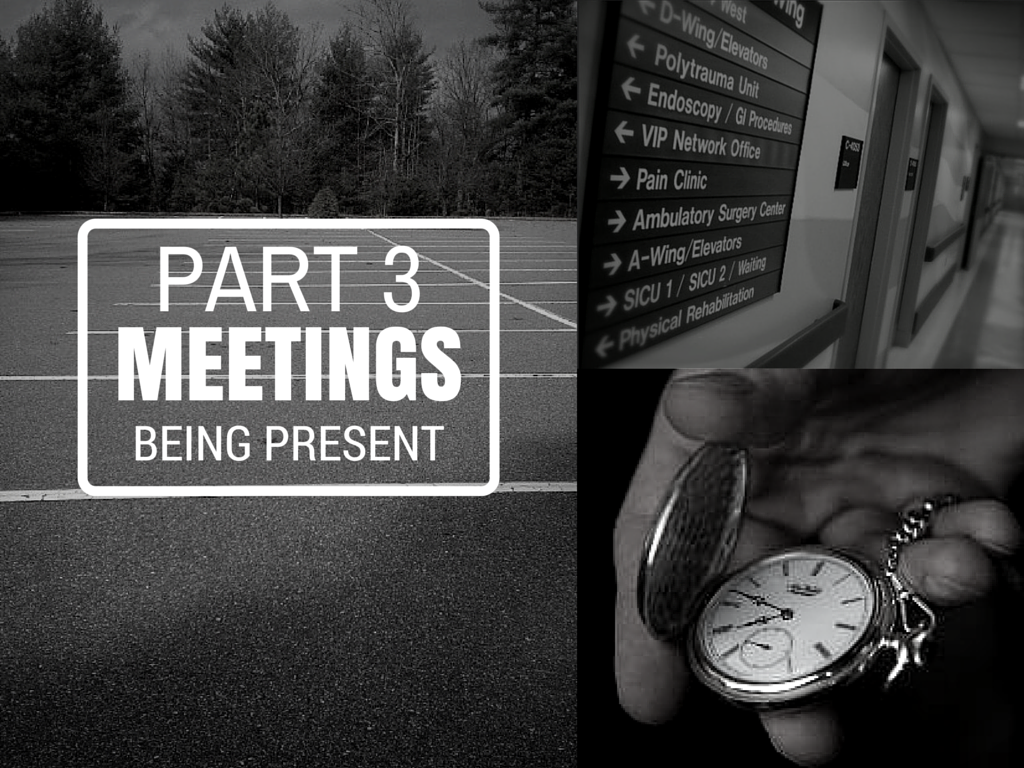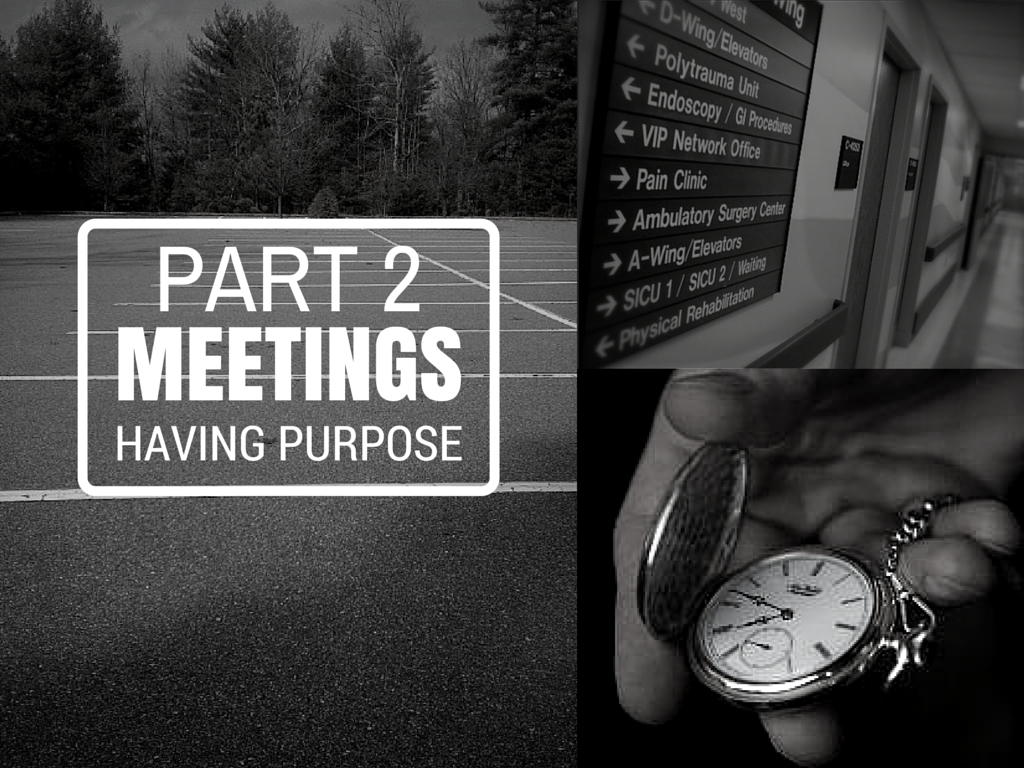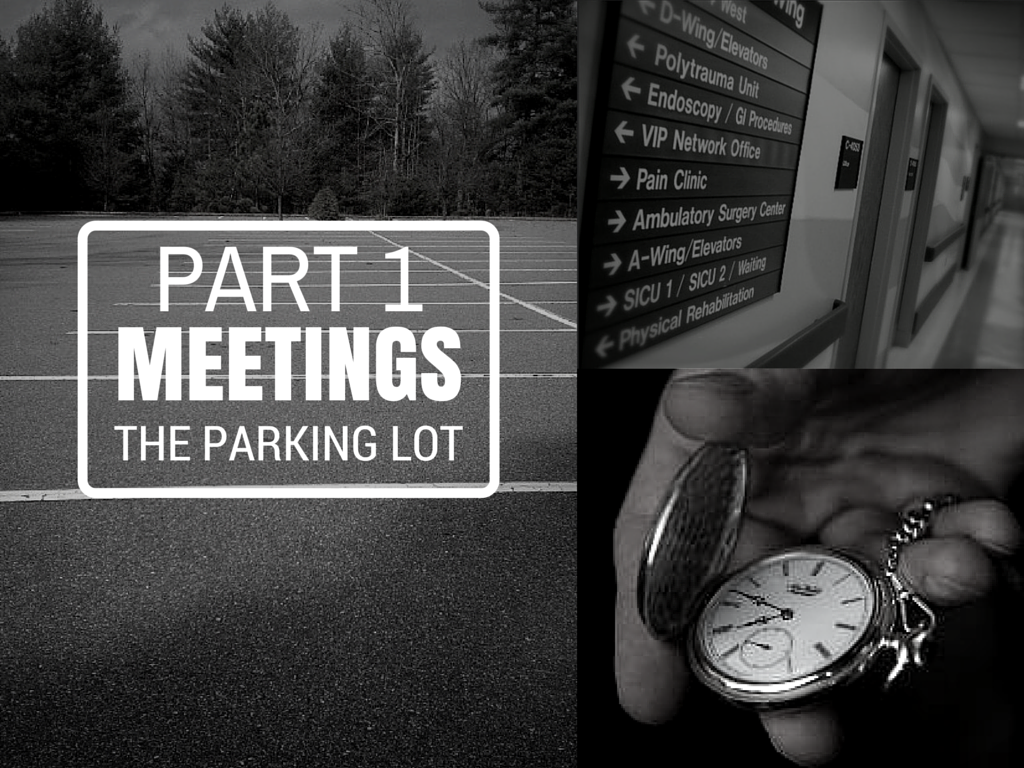Meetings are challenging. People handle the challenge in different ways. Some simply don’t show up. Others complain. Some try to take control. Some sit and distract themselves with their smart phones. We like to convince ourselves that one or two people are to blame for unproductive meetings. In reality, each person on the committee plays a role in how well the group functions.
We have spent decades trying to diagnosis meetings.
Efforts to create effective and efficient committees have focused largely on getting the right people in the right positions. If this strategy really worked, religious institutions would be reaping massive rewards right about now. The problem is not every congregation has access to high quality and well trained leaders. In order to make the most of the people resources they have, some congregations have turned to diagnostic tools to do a better job of matching people with positions.
Some diagnostic tools are focused on pinpointing key characteristics and qualities of good leadership. While many people seem to enjoy this approach to leadership, it does not address the problem of variability. Let’s say you have an individual who has the skills and experience to lead an effective team. They get high marks on a diagnostic test for leadership qualities. But then something happens to them. The begin to have relationship problems at home with a spouse or a child. Suddenly, their effectiveness declines. The key markers of leadership that were tested earlier have somehow vanished. It happens to all of us. If you push the right buttons at the right time with the right amount of force, we all will fall short of being at our best. So, if our functioning as leaders can be influenced by stress from relationship issues, then shouldn’t we really be testing for something else?
In order to address the relationship problems, some have turned to diagnostic tools like the Myers-Briggs. Based on personality types of an individual, it attempts to show how each personality grouping interacts with other groupings. While the descriptions may be accurate, the problem is in the way individuals deal with the differences. Personality traits become the reason people aren’t getting along. “I can’t work with so and so because they are too feeling oriented and extroverted.”
During the 1990’s and early 2000’s there were efforts to move into a more evaluative approach to meetings. Committees were encouraged to end their meetings with an evaluation of the meeting. Questions were asked like: How did you feel about the meeting? What didn’t you like? What worked? How can we do better? While these types of questions seem to be headed in the right direction, the problem remained that individuals found it difficult to give an honest critic without worrying that others would take it personally.
We cannot be responsible for the functioning of others leaders. We can only be responsible for our own functioning as a leader.
Ultimately, the focus of any leader needs to be on self. When individuals are able to think about and reflect on their own functioning, in relationship to the people around them, they become better leaders. It’s really this simple and yet, complex. It’s simple in the sense that one does not need to be educated in all of the diagnostic tools and methodologies that exist in the genre of congregational leadership. It’s complex because it’s about emotional process which, to understanding, requires an investment of time and thinking.
Dr. Murray Bowen’s concept of the nuclear family emotional process is useful in understanding the nature of leadership. In his initial research with families where an adult child was diagnosed with schizophrenia, Bowen observed four basic patterns or mechanisms families have at their disposal to manage increased levels of anxiety in the family. In and of themselves, theses patterns are normal and harmless. However, under enough stress, with limited flexibility in the family, and limited access to extended family member’s, problems emerge as symptoms. The four patterns are conflict, dysfunction in a spouse, impairment of a child, and emotional distancing. You can read more about the NFEP by clicking here.
In my experience, it is possible to see these same patterns influencing congregational meetings. When individuals bring to the meeting a higher level of anxiety from their families, it can spill over into the meeting. Let’s say a member of the children’s ministry team has arrived for a meeting on the heels of a major conflict at home with their spouse. What was to be a simple vote on scheduling a summer kid’s programs has turned into a heated debate about how Styrofoam cups are not being recycled.
A good leader pays attention to these basic patterns and how they play out during a meeting. A good leader also knows that diagnosing someone else’s behavior makes the situation worse. “You know what your problem is? You’re emotionally distant and not engaged!” This type of pursuit never goes well, whether it’s in a family or a finance meeting.
A good leader focuses on their own functioning. They spend time observing their own reactivity to others. Becoming aware of how they make use of these patterns when anxiety is on the rise is helpful in doing better as a leader. Bowen observed that this work is best done in one’s family of origin. However, it’s possible to observe it in congregational meetings and then work to do better with it in one’s family.
As I lead, I pay attention to my behavior and work to identify when I am more likely to be in conflict; when I’m more likely to over function or under function; when I’m more likely to focus my anxiety on someone else; and when I am more likely to emotionally distance. The effort is to understand how it happens in the presence of heightened anxiety, develop strategies for doing better, and then take actions steps.
In order to understanding how it happens, I have found these questions to be useful:
- Am I engaged in my conversation with others? Am I participating at my typical level or am I participating less than usual or more than usual?
- Am I focused on the facts or am I fantasizing about what should, would or could happen?
- Am I expressing clear ideas and thoughts that are “I” positions?
- Am I trying to convince everyone I’m right?
- Am I defending myself?
- Am I being responsible? Am I doing less or am I trying to fix the problem and doing too much?
- Am I focused more on the behavior of others or on my own behavior?
So, the first step is to pay attention to my own reactivity to others.
The next step is to think about how my own behavior is influencing the relationship system. How am I being influenced by others and how am I influencing others through my behavior?
The third step is creating a plan on how to be present in a different, more responsible way.
And finally, it’s about taking an action step, then evaluating how it went, and then beginning the process again.
The importance of being present and accounted for.
How am I being present and accounted for at important events in the life of the congregation and in my own family. When is it easy to be present, when is it difficult? How am I present? What is my purpose when I’m present with others?
When leaders are more intentional about being present and accounted for, they are more thoughtful and less reactive in their functioning. This process has the potential for increasing one’s overall level of functioning in the relationship system. The relationship system also does better.
When talking about the family, Bowen observed that families do better with a leader who has “the courage to define a self, who is as invested in the welfare of the family as in self, who is neither angry nor dogmatic, whose energy goes to changing self rather than telling others what they should do, who can know and respect the multiple opinions of others, who can modify self in response to the strengths of the group, and who is not influenced by the irresponsible opinions of others.” (Family Evaluation, page 342-3).
It's true for the family and it’s true for the congregation.




 RSS Feed
RSS Feed